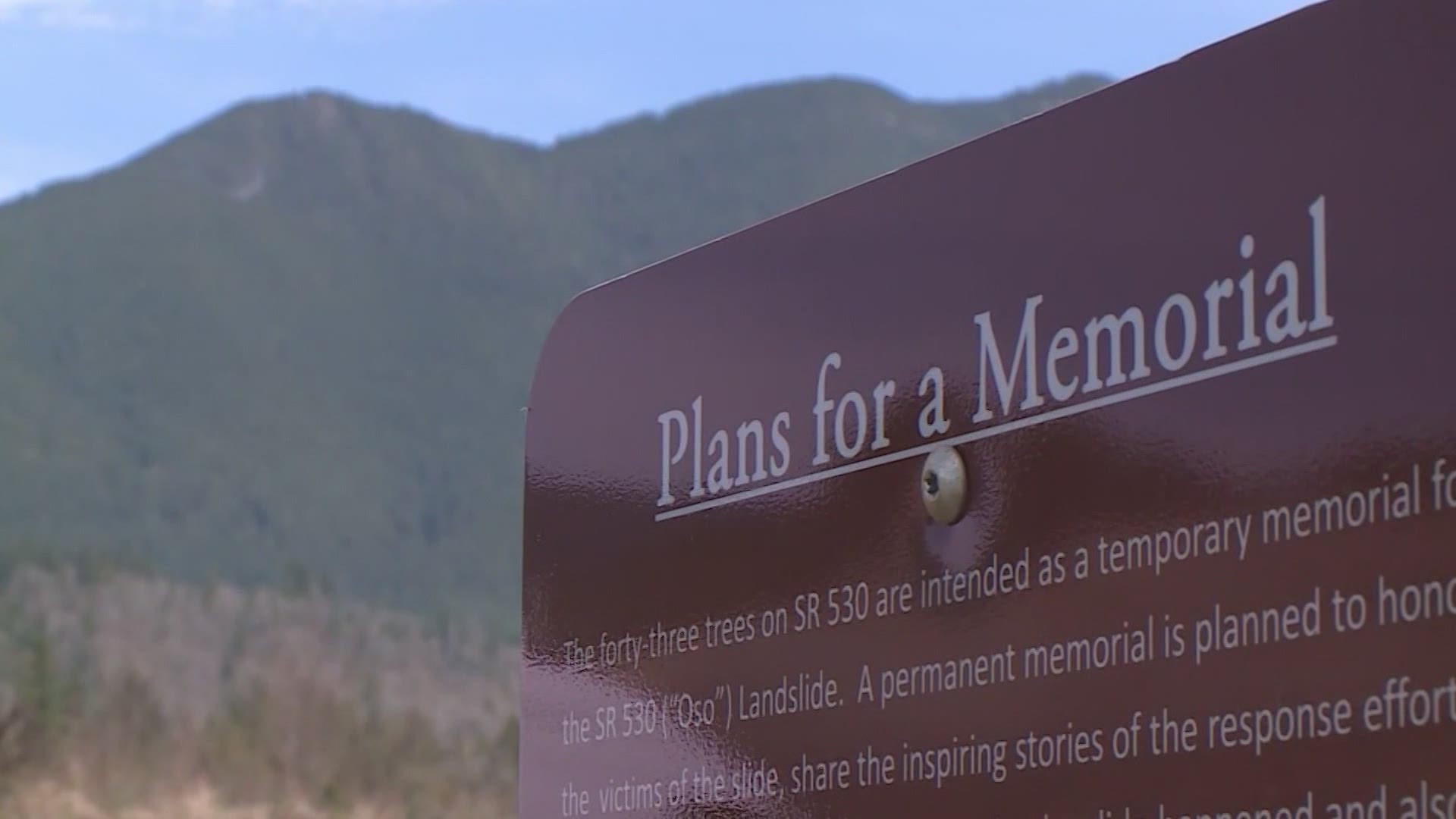Editor's note: The above video on the Oso landslide tragedy anniversary originally aired March 22, 2021.
SEATTLE – Washington is one of the most landslide-prone states in the U.S. According to the Department of Natural Resources (DNR), there are hundreds, sometimes thousands of landslide incidents that occur each year.
Along with the potential for related deaths, landslides can cost millions in road repairs and property damage. Plus, losses in tax revenue, environmental impacts and the degradation of water quality can add to the burden of these natural disasters.
The Washington State Department of Transportation annually budgets for about $15 million in landslide cleanup for highways alone.
These forces of nature occur when the integrity of the soil and debris on the side of a hill is broken down to not withstand the force of gravity, usually because of saturation or sudden movement within the land.
While landslides do occur naturally and are difficult to predict, there are warning signs residents and travelers can look out for, ways to reduce the risk of landslides and steps to take to survive landslides.
The U.S. Geological Survey (USGS) provides a list of warning signs that could help Washingtonians recognize a landslide before it even happens.
The following is a list of things to look out for:
- Any water or saturated ground in areas that are not typically wet, along with any broken water lines or other utilities
- Cracks or bulges in the ground, street pavement or sidewalk, tilting or cracking in concrete floors or foundations and secondary structures like decks, patios or additions
- Sunken roadbeds or leaning telephone poles, trees, retaining walls or fences as well as offset fence lines
Also, inside of a structure, doors and windows may begin to stick and visible open spaces in doorframes and window frames could indicate they are out of plumb and shifting.
In order to reduce the risk of landslides, the DNR has a robust list of practices that includes things like avoiding living in areas prone to landslides like steep hills, slopes or areas that have experienced landslides before.
However, for those living in landslide-prone areas, there are actions to take during a slide that could help save your life.
Here’s what to do if you’re caught in a landslide:
- Listen for loud or unusual sounds that could indicate an imminent landslide and quickly evacuate or move away from the origin of the slide
- Move inside of a smaller interior area like a bathroom or closet where you can be safely barricaded in
- Open any downhill windows or doors to allow any debris that gets caught inside the building or home to escape
- Avoid any heavy objects or furniture that could move and injure you
- Try to get to a second floor or elevated area to avoid being carried away by the shifting debris
University of Washington professor Joseph Wartman, an expert on the deadly Oso landslide catastrophe of 2014, said even getting on top of a counter can make a difference between life and death.
The USGS said the areas considered the safest from landslides are on hard, non-jointed bedrock, relatively flat areas away from sudden slope changes and at the top or along the nose of ridges set back from any slopes.
This is why even largely developed areas, like Seattle, face landslide danger with its steep hills and wet weather.
The city says that 8.4% of its surface is considered landslide-prone, 81% of which is zoned for open space, public right of way and single-family residences.
Plus, landslides are not covered in traditional home-owner insurance policies. The city has taken steps to reduce landslides by requiring construction to include stabilization and conducting slope stabilization projects.
Nationally, landslides typically cost more than $2 billion in losses every year and an estimated 25-50 people die.
Join KING 5’s Disaster Preparedness Facebook group and learn how you and your community can get ready for when disaster strikes.

